Kejetia Lorry Terminal deteriorates
Picture shows an aerial view of the Kejetia Lorry Terminal
Kejetia is one name so dear to the hearts of residents in the
A number of the pavement blocks have been dented and there seem to be no plan to get the deteriorated pavement blocks rehabilitated inspite of numerous calls by the public to get them repaired.
The situation becomes worse during rainy periods as pedestrians have to meander through floods to board and alight from vehicles.
Big buses, especially the double decker ones belonging to the Metro Mass Transit (MMT) move about in dislocated pavement blocks under dangerous conditions.
Picture shows dislocated pavement blocks at the Kejetia Lorry Terminal with vehicles trying to move through stagnant waters at the place.
In giving out the management of the lorry terminal to a private company, Mr. Maxwell Kofi Jumah, the then Metropolitan Chief Executive of the Kumasi Metropolitan Assembly (KMA) explained that the management of the lorry terminal was going to be on contract basis and gave a long list of what was to be expected at Kejetia.
This included the registering of special potters at the place and clothing them for easy identification, a thorough cleaning and monitoring of the infrastructure at the place as well as routine maintenance of the infrastructure.
The managers were to ensure that hawking was not entertained at the place but the direct opposite of what was outlined is being experienced at the place currently.
Employees of managers of the place, F. D. Freko, allegedly take bribes from certain hawkers and allow them to ply their trade at the place.
Aside the deteriorating nature of the place is the present crop of vehicular congestion at the place.
The government decided to rehabilitate the lorry terminal with the intention to find a lasting solution to the problem of the heavy pedestrian population, which competed with vehicular traffic resulting in the confusion in the area as a result of the heavy “go-slow” that engulfed the area then and sprang to the centre of
The idea was to find a solution to the problem once and for all whilst at the same time maintain the natural beauty of the area, thereby separate the market, and the cars from the pedestrian.
It looks as if the problem that existed at the place earlier on is being allowed to repeat itself with the construction of more market stores at the place thus limiting parking and loading points for vehicles.
There is congestion all over the place at Kejetia presently as vehicles struggle to get access to the terminal, which temporarily block traffic to
Indeed no project had ever attracted so much controversy in the history of
A clause in the agreement at the time of the rehabilitation debarred the contractor from talking about the project except with the client.
Officials at the Urban Roads Department, which was the client, at that time, referred anyone who needed information on the project to
It was therefore not surprising that many people read several interpretations into the project until the Roads and Transport Ministry finally intervened and went public.
In its explanation, the Ministry pointed out that the project was in phases- the Kejetia Development Project proper and the Kejetia Lorry Terminal.
The Kejetia Development Project involved the re-alignment of the roads to and from Kejetia, which re-directed vehicular traffic from the roundabout as well as the development of an infrastructure at the Central Market.
Messrs Limex Bau Limited, a German company, executed the Kejetia Development project proper while Messrs G. K. Appiah handled the Kejetia Lorry Terminal project, which involved the rehabilitation of the lorry park.
The two projects were therefore considered as one, which was going to help
Under the terminal project no provision was made for shops in the original plan of 1990.
The design included the reconstruction of the lorry park, passenger sheds, offices, a plaza area around the roundabout with pedestrian alleys and shopping areas for the sale of artifacts.
But what do we see today? New developments and construction of market stores are springing up all over the place.
It would be recalled that a controversy ensued in 1999 between the Kejetia Traders Association who tried to construct market stores at the place and the
The controversy bordered on the authorisation by Nana Akwasi Agyemang, the then Metropolitan Chief Executive for the construction of stores by the traders association.
The GPRTU in their argument said the lorry park was already too small to accommodate the heavy vehicular population in
The KMA later demolished and prevented the traders association from constructing an 84-shop complex at the terminal following the GPRTU’s objection, claiming that the building was being constructed in the middle of the terminal and would therefore reduce parking spaces.
The KMA stopped the project after it had given the permission for the construction of the shops for displaced members of the Kejetia Traders Association who were affected by the Kejetia project.
The Regional Security Council (REGSEC) later ruled that the building was not properly sited and that it should be demolished and a suitable place allocated to the Association for the construction of a new building.
But it looks as if lessons from the controversies that ensued in 1999 over the construction of the market stores at Kejetia have soon been forgotten.
Picture shows dislocated pavement blocks at the Kejetia Lorry Terminal with vehicles trying to move through stagnant waters at the place
A visit to the area reveals that places designed for taxi ranks have been taken over by stores, which has contributed to limiting parking and loading points for vehicles.
The Kejetia Traders Association in 2004 repeated a call for the Kumasi Metropolitan Assembly to explain the rational behind the decision to allow a private developer to construct market stores at the terminal after the Assembly had demolished and prevented the association from putting up similar stores at the terminal in 1999 with the excuse that the stores was going to limit parking spaces at the place.
Surprisingly, there was no response to that effect and the building project, is almost complete, standing on the same foundation, which was ruled as unfit for construction earlier on.
This is only one of the constructions going on at the place, apart from other ones, which have already been completed.
Before the project was implemented various studies were done by the Building Research and Road Institute (BRRI). Several designs, which included the construction of flyovers (interchange), were also considered.
The study by the BRRI indicated that the use of flyover at the area was good, but it was going to be expensive to construct hence the idea of flyover was abandoned.
The final basis for the selection of the present design (without a flyover) was to find optimal solution to the problem of pedestrian and vehicular congestion at the place thereby maximising the use of the available space to improve pedestrian and vehicular movement in view of the limited resources.
Various options were therefore put before the financiers of the project who were the World Bank and OPEC Fund and the present design was selected based on availability of resources.
Traffic from Adum through the then roundabout to Ashanti New Town and Manhyia were diverted through the Children’s Hospital area and the Zoo with the aim to help reduce congestion.
It was later announced that even though the project was being executed nothing prevents the construction of flyovers when funds were available, but how can that be done, with the present market stores construction if there is a decision to construct flyovers.
Due to the central location of
Studies by the Building and Road Research Institute (BRRI) in 1999 showed that the Kejetia area was the busiest spot in the whole of
According to the studies, as many as 13,000 people shuttle between the Kejetia Lorry park and the Mampong road in an hour whilst 18,000 cross over from the lorry park to the central market.
This heavy pedestrian population competed with vehicular traffic resulting in the confusion in the area, which accounted for heavy “go-slow” in the centre of
The intention of government was therefore to find a solution to that problem once and for all whilst at the same time maintain the natural beauty of the area, thereby separate the market, and the cars from the pedestrian.
It looks as if the problem that existed at the place earlier on is being allowed to repeat itself with the construction of more market stores at the place.
If nothing was done about it, the problem would be compounded and it would mean the more market shops, the more human congestion at the place.
Are we to wait and observe our cherished Kejetia lorry terminal deteriorate and get back to the bad state in which it was before the rehabilitation or has the focus for reducing vehicular traffic and human congestion at the place changed?








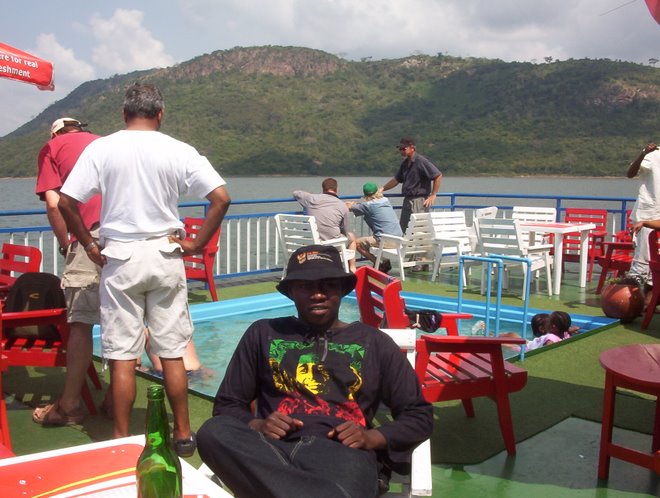
























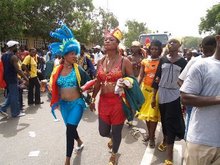
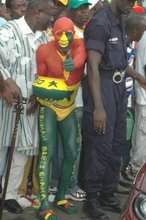

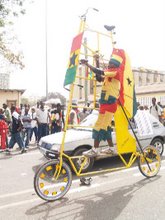
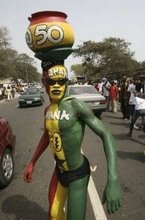




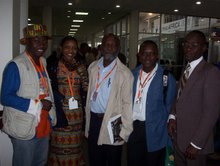
1 comment:
better
Post a Comment